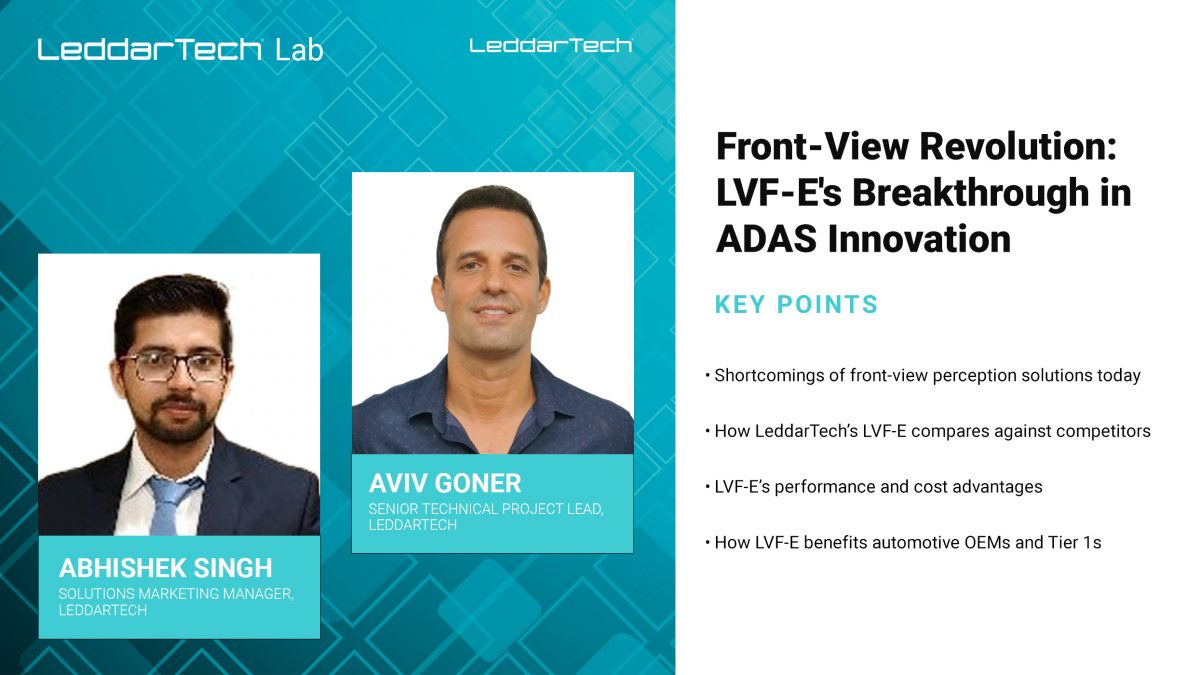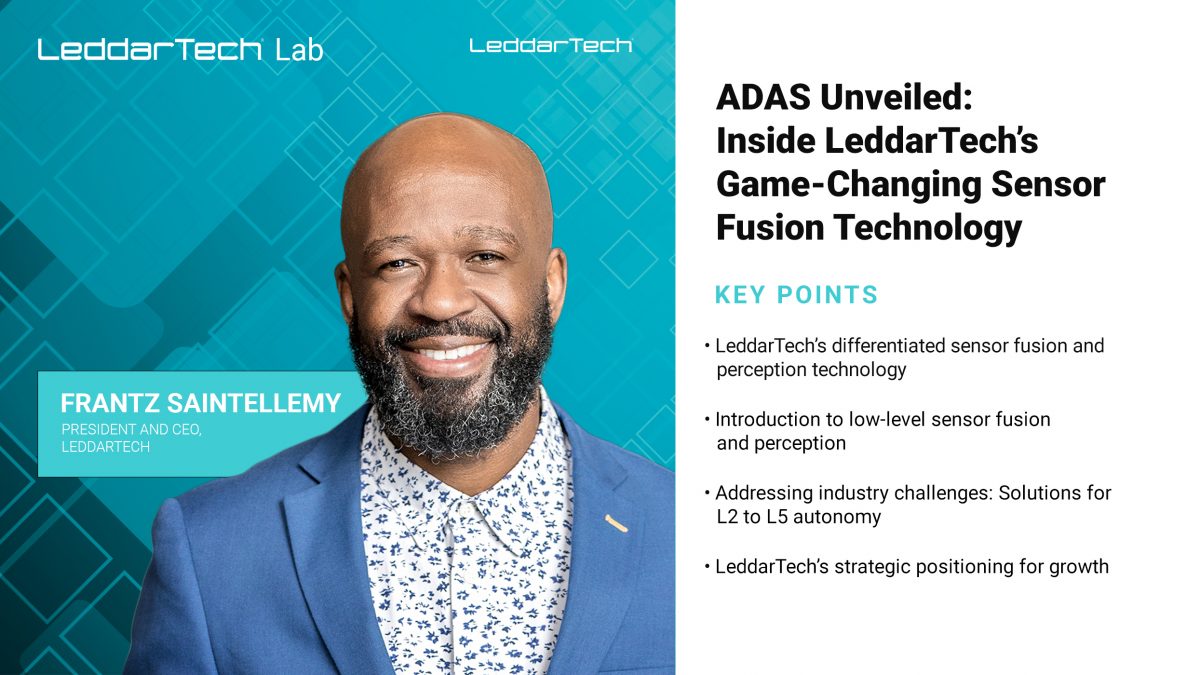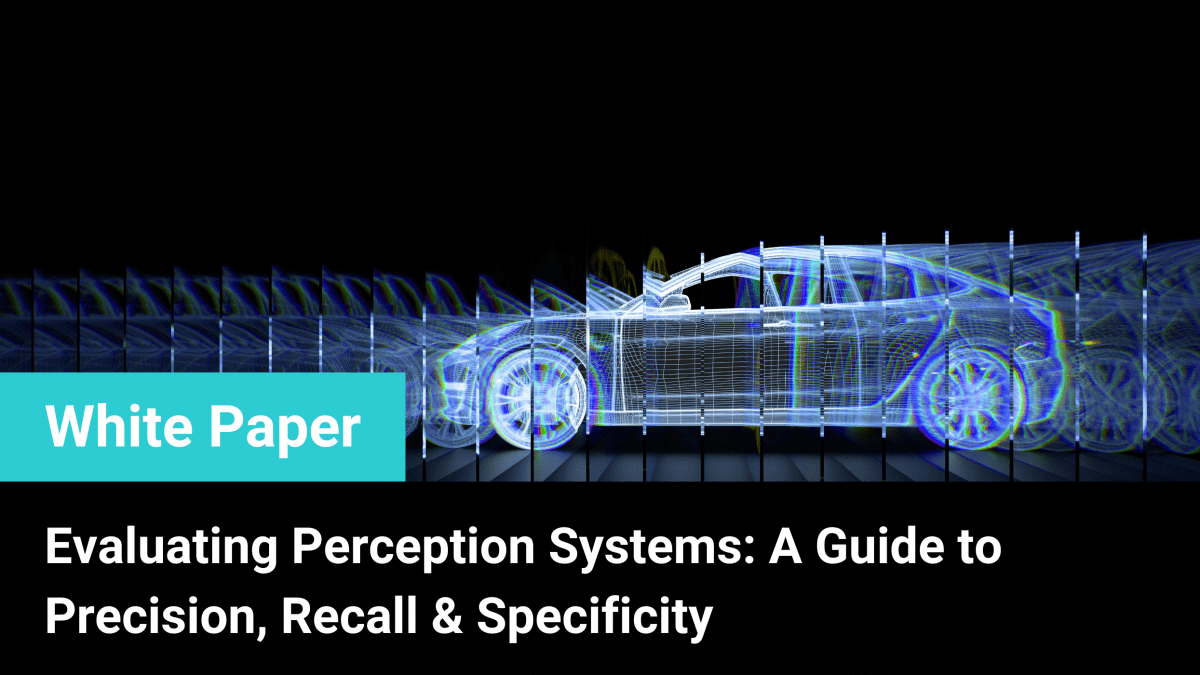A Global Perspective:
ADAS Experts Across Asia, Europe, and North America Share Insights
LeddarTech’s global ADAS and AD experts, Hannah Osborn from North America, Albert Santiago from Europe and Clive Szeto from China share insights on the changing ADAS landscape in their respective region. What’s fueling industry trends, consumer habits and what the near future promises. Hannah, Albert and Clive discuss consumer attitude towards existing ADAS features, what works, the adoption challenges and what doesn’t work. They also share insights on the changing regulatory landscapes amidst an increased emphasis on using ADAS technologies for enhanced road safety.
Further on, they discuss the different approaches automotive OEMs and Tier-1s are taking towards addressing consumer needs and the strategies they’re exploring to increase revenue and market share.
Podcast Transcript
Michelle: Hello, and welcome to the LeddarTech Lab podcast brought to you by LeddarTech. I’m your host, Michelle Dawn Mooney. Today, we’re talking about a global perspective when it comes to experts in ADAS, and we’re going to have insight from North America, Europe, and East Asia, and have great guests to bring on board for this conversation. We have Clive Szeto, who is Senior Director of Sales and Business Development for Asia. We have Hannah Osborne, who is Director of America Sales and Business Development. And we have Alberto Santiago, Key Account Manager for Europe, all from LeddarTech. And we are so looking forward to kind of diving in because the global perspective is so important when it comes to ADAS and AD. So let’s start here. What is the end user attitude towards ADAS and AD in your respective regions? Clive, I want to start with you.
Clive: Thanks. Chinese consumers across segments have the strongest interest in self-driving technology. A recent report from McKinsey, about 60% of Chinese consumers said they are willing to pay for a high level, level four, highway pilot solution less than $10,000. So with the demand and the high interest, you probably notice that the car companies in China, they launch new car models very quickly. And personally, I am considering to buy one.
Michelle: Well, if that’s not an endorsement, I don’t know what is, right? So let’s move on to the European side of things. Albert, do you want to fill us in there?
Albert: Safety remains a primary concern for European users. And from that standpoint, the regulatory framework in Europe, Euro NCAP and GSR, has really helped push the adoption of safety features very fast. And this is not to say that the Comfort ADAS and AD has taken a back seat, because Mercedes Drive Pilot was first approved on the German road, you know. But cost remains a barrier for the larger adoption of advanced driver assistance systems. And this is why actually we’ve worked hard at LeddarTech to actually put the performance of our software at the service of scaling down system architecture and making them more cost efficient for volume cars.
Michelle: And Hannah, want to give us the insight from North America?
Hannah: Yes, I think it’s similar to what Albert is describing in the U.S. as well. We see a lot of enthusiasm from the consumers for these technologies, but that’s not quite showing up in sales yet. So for whatever reason, the take rates remain quite low, although they are projected to continue to grow. Another interesting thing is amongst the consumers that do opt to purchase these features, we see a lot of them just not using them, either because they don’t understand how they work, they feel some of the alarms are nuisances. There’s a clear gap between their expectations and the system performance, and it may have to do with just simply misunderstanding and lack of education about this. But there’s a clear gap that we need to bridge. There’s a lot of room for improvement, and we look forward to more people buying these features and more people actually using them so we can achieve the safety that we’re targeting.
Michelle: And I think a lot of that stems from people don’t know because things are evolving so quickly and it’s changing, so it’s hard to kind of keep up. So that kind of leads me to my next question. We’re talking about how things are evolving so quickly, safety standards and regulations in the ADAS landscape. So what discussions are taking place in your respective regions to stay ahead of the compliance to basically handle and address those safety concerns and make sure any regulations are met?
Hannah: So it’s very, very important before you try to address a problem to make sure that you
actually have properly defined and understand it. So there’s a lot of effort put forth to study the actual crash scenarios, and we see that even as these ADAS features are introduced in some cases, the crash scenarios are actually shifting. So this is a moving target, and it takes efforts and joint conversations from regulators, the government, consumers, OEMs, tier one suppliers, everyone to come together to understand what the real problems are, how they’re shifting, and to properly spec these systems, properly design them so that we can stay ahead of the curve in preventing these fatalities.
Michelle: And Clive, what about you? What type of discussions are happening in Asia regarding those standards and regulations?
Clive: Car companies in China conduct rigorous testing and validation processes to ensure the safety and reliability of their car models. With that, they also can identify safety concerns, potential ones, before they launch the car to the market. In parallel, the car company also continues to try to educate the consumer about the benefits and also the limitations of their technology. It will reduce the misuse and over-reliance situation.
Michelle: And Albert, what does that look like in Europe?
Albert: So what was stated by my colleagues applies very well in Europe as well, but what I would like to add maybe is that for OEM to stay ahead of this compliance curve and differentiate themselves also, it’s important for them to have a system that can be upgradable over the lifetime of the vehicle. And this is why they go to a software-defined vehicle and a system that can push over-the-air updates to always stay ahead of the competition and ahead of the compliance curve for safety.
Michelle: So what questions do you hear from ADAS and AD developers? And then can you
share some insights with regard to your regions?
Clive: Sure. The ADAS and AD developers in my region are all the way ones to differentiate themselves from competitors. With that, they want to know how our solution can help them address some of their pain points and contribute in a cost reduction in a system-level consideration. If they’re interested to proceed, the next common question will be how our software can work well with their software in one single system.
Hannah: I think the most common question I get is very similar to what Clive alluded to, is
that how is LeddarTech differentiated from the competition? What makes us different and what makes us better? And the core of that answer is in our approach to fusing the data. So the common approach today is object-level fusion, whereas LeddarTech is focused on low-level fusion. And this architecture brings a lot of benefits with it, including improved performance, lower cost, scalability, and flexibility. So LeddarTech is bringing a lot of strengths to the table that can help our customers to improve and differentiate their end product.
Albert: and when it comes to answering questions about performance, actually, there is usually no better answer than proving on the ground, in real life, how our system performs. So for this, we offer our customers a variety of options to actually test our technology. In real-life scenario, we have a demo kit, we have a demonstration car, and we obviously also tailor solution for our customers’ system architectures.
Michelle: So staying abreast of latest trends and technologies really is imperative with what we’re talking about here today, not only for ADAS and AD developers, but for yourselves as well. So how do you kind of stay ahead of those rapid developments in the automotive industry? And then, more importantly, how do you kind of incorporate the emerging technologies that you see when it comes to ADAS and AD development?
Albert: Yeah, well, one thing that I maybe I would like to mention is that for us, it’s absolutely essential to participate to the most influential technology events that are out there in our industry.
Clive: Just to expand on that, we still think that a very effective way is to be close to the OEM, Tier 1, and other ecosystem partners to understand their changing needs, challenges, and also expectation. With that, we get feedback on our offering, and very importantly, we also need to know what our competitors are doing, their positioning, their products, the project that they win, and then we can identify the gaps and also the potential improvement in our solution.
Hannah: Yeah, I think one thing that a lot of our customers don’t know about us is our headquarters is in Quebec City. We have an R&D center in Montreal, as well, and those are homes to some of the world’s best AI institutions, so we’re pulling from the top talent pool when we’re building our team, and that helps us to stay on top of the field. Our office in Tel Aviv, as well, that’s a hotbed for talent in this space, so that makes us uniquely positioned to understand what’s going on and where this industry is moving. In addition to that, we’ve built a phenomenal board of directors and advisors that are experts in this field, as well, so they help us to flesh out our roadmap, stay on track, and make sure that our strategy is sound.
Michelle: So how do OEMs, Tier 1s, ADAS, and AD developers engage with LeddarTech and more importantly, why should they engage?
Albert: Well, I think our customers, they come with us and engage with us for four key benefits that we bring to them. One is high performance. Actually, our low-level fusion and perception approach really pushed the envelopes of what the current object-level fusion architectures are capable of doing. Second is cost efficiency, which is actually the other side of performance. As I mentioned earlier, we’re trying to put performance at the service of scaling down system architecture and more cost-efficient system architecture. One is flexibility, because we have that abstraction layer that results from our fusion, and that makes our perception decoupled from the sensors themselves, so we can actually cope with changes of sensors, sensor position, sensor orientation, so that makes it very flexible in the approach. And obviously, we are super scalable by nature, scalable in terms of sophistication, adding more sensors, adding more features, but also scalable with the trend of centralizing the EE architecture in the vehicle.
Clive: Thanks, Albert, for summarizing the benefits for us. For low-level fusion, we fuse the raw data collected by different types of sensors into a precise RGBD model. With all the information we collect, we make one decision in one model, and this approach proves to have higher precision of detection, lower false positives for small and unclassified objects compared to object-level fusion method. With the technology, we have a number of products, the LeddarVision front entry, the LeddarVision front high-end, the LeddarVision surround for L2+, and the LeddarVision parking.
Hannah: A lot of our customers are at first thinking to develop the software themselves, but it doesn’t really make sense if you look at the amount of their budget and their resources it would take to do this, and after spending so much money and so much time and effort, it would take them years to develop what we already have in hand today. So rather than going through that practice, to just partner with us to let us provide this piece of the puzzle so that they can refocus their effort, their budget, and their development efforts to build on top of what we have and to further differentiate themselves on that end. I think that’s the most important reason to work with Lettertec and one of the top benefits that we bring. And as Clive had mentioned, and Albert as well, we have a lot of benefits. If you go to our website, lettertec.com, and explore the dashboard, you can see a lot of the videos that we have showing our performance in challenging conditions, obstructed view, inclement weather, lighting conditions, and so on. Just to get an
Michelle: And it really is eye-opening when you visit the website to see those videos you’re talking about. It’s amazing that the 360 views, until you actually see it in motion, literally and figuratively, it’s something that you have to see to believe. So I want to thank all of you for being here. Clive Szeto, Senior Director, Sales and Business Development in Asia, Hannah Osborne, Director, America Sales and Business Development, and Albert Santiago, Key Account Manager in Europe. Thank you so much for your time and being here. And a great conversation, and excited to see where the future takes us. So appreciate your time today. I want to thank all of you for tuning in and listening to the LeddarTech Lab podcast. Of course, you can visit lettertec.com for more information and watch all those videos that we were alluding to, and check out all the other information about what we’re talking about with ADAS, AD, and sensor fusion perception.
Thank you again for joining us. I’m your host, Michelle Dawn Moody. We hope to connect with you on another podcast soon.






